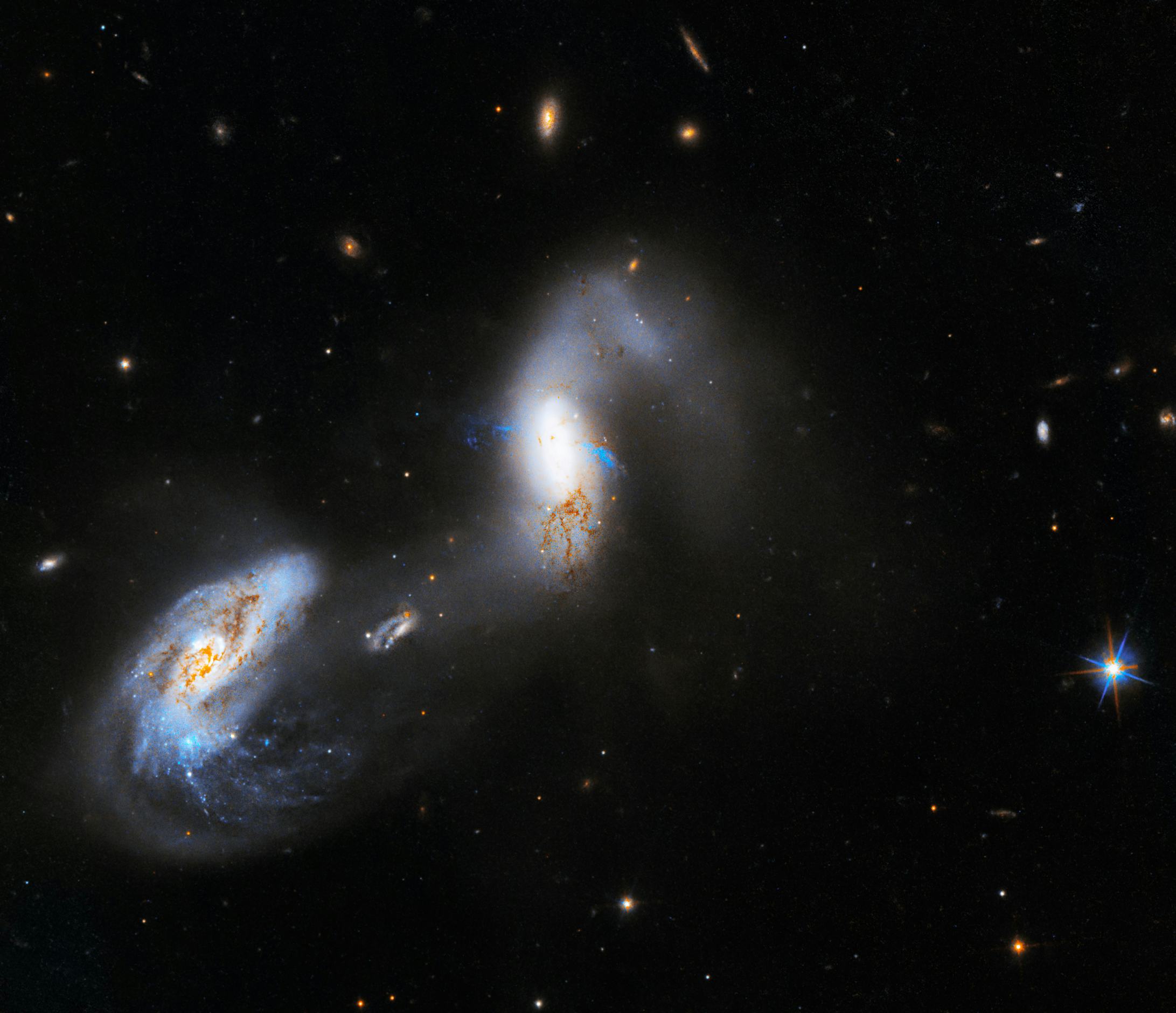
Two blazing galaxies play gravitational tug of war with stars and streamers of gas in the latest image from NASA’s Hubble Space Telescope.
The two galaxies are so closely linked that they share a single number in catalogs of astronomical objects: AM 1214-255 (or ESO 505-31, if you’re not a fan of the Catalog of Southern Peculiar Galaxies, but who isn’t?). But their relationship is a little dysfunctional — each galaxy’s gravity has warped and stretched the other’s spiral arms into lopsided shapes.
They do have something in common, at least: both galaxies have actively feeding, growing supermassive black holes in their cores. Astronomers used Hubble to capture this image as part of a survey of galaxies with active galactic nuclei (the less dramatic term for “there’s a black hole lurking in the heart of this galaxy and feasting on anything foolish enough to get close”).

Shine bright like a Seyfert galaxy
As gas and dust spiral inward toward a black hole, they collide with other bits of material, and all that friction creates tremendous amounts of heat. The accretion disk around a supermassive black hole is hotter than the core of our Sun, and it often glows brighter than all the billions of stars in the rest of the galaxy combined. In fact, the bright glow of the disk around the supermassive black hole is all that’s visible from some distant galaxies, called quasars.
But in the two galaxies that make up AM 1214-255, the light from each galaxy’s nucleus is “only” about as bright as the rest of the galaxy, so Hubble’s cameras can clearly see the galaxies’ intricate — but warped — structures, including reddish bands of dust and a few bright areas where new stars are forming. Galaxies like the ones in AM 1214-255, whose light doesn’t get drowned out by the brilliant glare of their nuclei, are called Seyfert galaxies. Seyfert galaxies make up about ten percent of all known galaxies.
These two are a bit less than half a billion light years away from Earth. Even more distant galaxies show up as tiny ellipses and spirals in the background of the Hubble image — a reminder of just how immense space is. And in all that vast space, at least AM 1214-255 have each other. Eventually, they may merge with each other to form a new, even larger galaxy (with an even more supermassive black hole at its center), or they may just collide and part ways.







